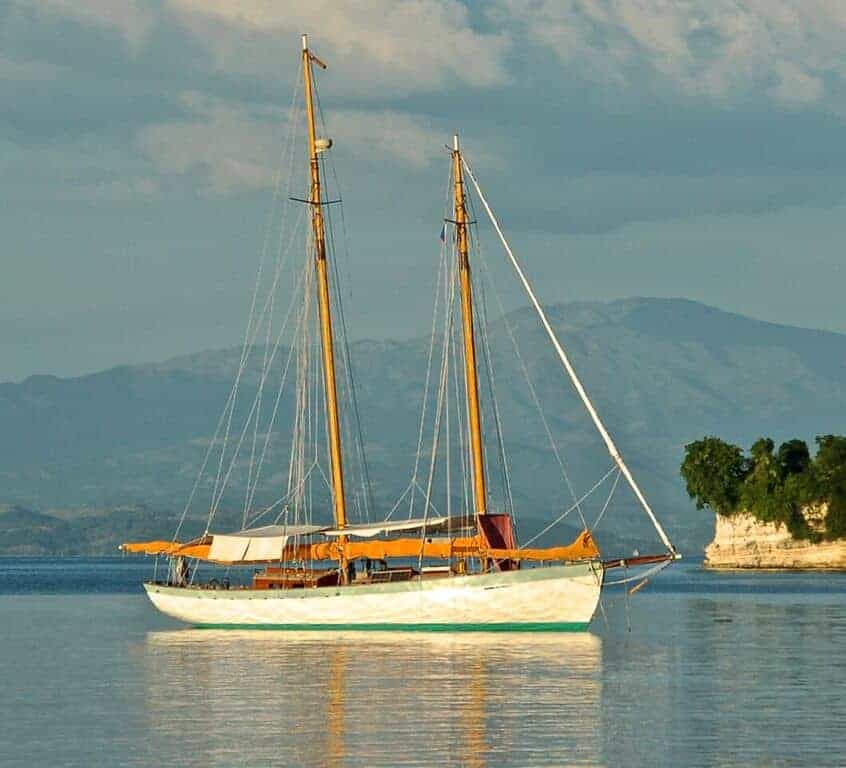In Part 2, Nat arrives in Haiti where he delivers a boatload of supplies to a local orphanage and shows us the Haitian coastal village. To read about the journey to Haiti, click here to visit Part 1.
There is a link at the bottom of this post if you’d like to donate to the Orphanage and Boatbuilder Fund — Nat will see that 100% of proceeds go to the orphanage and boatbuilders in Haiti.
At noon on December 8, four days after departing Bermuda, we were located at Latitude 22 20 North and Longitude 69 49 West, or 100 nautical miles northeast of Grand Turk Island. I set a course to take us between the reef-strewn Mouchoir Bank and the Turks Islands, and from there on to Le Mole at the northwest cape of Haiti. Although, still 350 miles from our destination, I sensed a slight sea change in our attitudes and expectations. The attentive companionship, communal friendship and shared experience on an ocean voyage is unique to the exclusive nature of its special environment and purpose. Approaching soundings, where the sea floor rises to a measurable distance below the keel—from miles of depth in mid ocean to fathoms or feet and eventually breaking the liquid surface to be called land—we aboard CHARLOTTE began to shift our thoughts in anticipation of landfall and the bittersweet knowledge that our freedom from worldly events, a significant part of the attraction of this passage, would also end. But the friendships made on a sea voyage endure with a timeless quality, like a bond with an old school mate before either of you had a care in the world.

We awakened in our secluded anchorage on the south coast of Île-à-Vache to a light breeze sifting across a palm-fringed white sand beach—a scene as captivating and beautiful as it had been a few hours earlier when we arrived under moonlight at o’clock in the morning. All hands dove over the side for a long swim, something we had been trying our best to avoid during the previous 6 ½ days since leaving Bermuda. Now, we had new freedoms, and swimming in this effervescent cove was a welcome change.
. . . sign up to the right to get immediate access to this full post,
plus you'll get 10 of our best videos for free.
Get Free Videos& Learn More Join Now!!for Full Access Members Sign In


David Flanders says:
What a wonderful story, so beautifully, sensitively, respectfully, and lovingly told. Nat, you and Pam put your heart and soul, as well as time and money, into this which you are so committed to. Would love to sail with you. Also, as an aside, I was floored, after seeing Charlotte, by your saying “Charlotte, which I built…”. Jeez, you’re one hell of a human.
My best, David Flanders
Dick Vilamil says:
Parts one and two were fantastic and brought back memories of sailing from Bermuda and US Navy days in Jamaica. Excitedly awaiting the report from the Cuban adventure!!!
Torrey Sylvester says:
Greatly enjoyed this post!
Pete Mullen says:
Nat, so glad I signed up with OCH and came across your tale of the Haiti voyage. Great sea story, even better cause. Congrats. Especially belly-laughed at the paragraph right under the ” Snowy departure off West Chop ” pic. Ellie and I have stayed close to Maureen and I’ll bring her up to speed on your ramblings which may be a nice interlude from the reconstruction of her new/old house. Best, Pete Mullen ( Charley’s old tennis buddy )
Edwin Spears says:
Diff, on my bucket List!